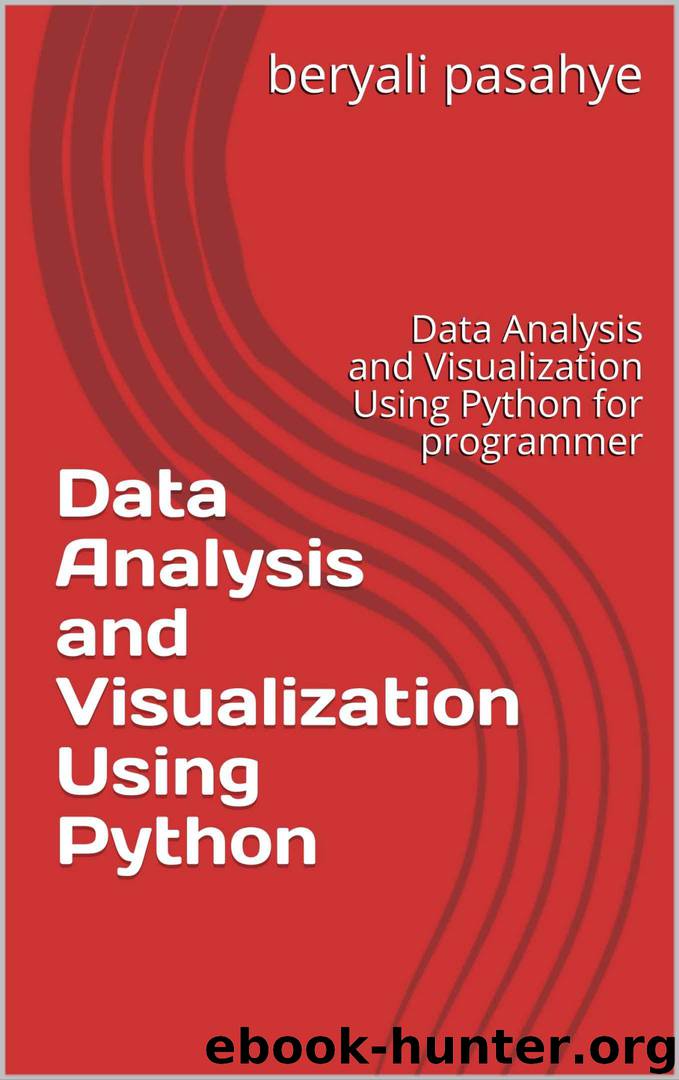Data Analysis and Visualization Using Python: Data Analysis and Visualization Using Python for programmer by pasahye beryali & pasahye beryali

Author:pasahye, beryali & pasahye, beryali [pasahye, beryali]
Language: eng
Format: azw3
Publisher: UNKNOWN
Published: 2019-05-24T16:00:00+00:00
CHAPTER 3
Data Collection Structures
Lists, dictionaries, tuples, series, data frames, and panels are Python data collection structures that can be used to maintain a collection of data. This chapter will demonstrate these various structures in detail with practical examples.
Lists
A list is a sequence of values of any data type that can be accessed forward or backward. Each value is called an element or a list item. Lists are mutable, which means that you won’t create a new list when you modify a list element. Elements are stored in the given order. Various operations can be conducted on lists such as insertion, sort, and deletion. A list can be created by storing a sequence of different types of values separated by commas. A Python list is enclosed between a square brackets ([]), and elements are stored in the index based on a starting index of 0.
Download
This site does not store any files on its server. We only index and link to content provided by other sites. Please contact the content providers to delete copyright contents if any and email us, we'll remove relevant links or contents immediately.
Deep Learning with Python by François Chollet(12585)
Hello! Python by Anthony Briggs(9924)
OCA Java SE 8 Programmer I Certification Guide by Mala Gupta(9799)
The Mikado Method by Ola Ellnestam Daniel Brolund(9784)
Dependency Injection in .NET by Mark Seemann(9347)
A Developer's Guide to Building Resilient Cloud Applications with Azure by Hamida Rebai Trabelsi(9314)
Hit Refresh by Satya Nadella(8829)
Algorithms of the Intelligent Web by Haralambos Marmanis;Dmitry Babenko(8309)
Sass and Compass in Action by Wynn Netherland Nathan Weizenbaum Chris Eppstein Brandon Mathis(7787)
Test-Driven iOS Development with Swift 4 by Dominik Hauser(7770)
Grails in Action by Glen Smith Peter Ledbrook(7703)
The Kubernetes Operator Framework Book by Michael Dame(7677)
The Well-Grounded Java Developer by Benjamin J. Evans Martijn Verburg(7564)
Exploring Deepfakes by Bryan Lyon and Matt Tora(7472)
Practical Computer Architecture with Python and ARM by Alan Clements(7391)
Implementing Enterprise Observability for Success by Manisha Agrawal and Karun Krishnannair(7375)
Robo-Advisor with Python by Aki Ranin(7352)
Building Low Latency Applications with C++ by Sourav Ghosh(7255)
Svelte with Test-Driven Development by Daniel Irvine(7222)
